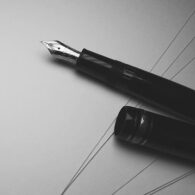Notes on Creaks & Cricks
“God willing and the crick don’t rise”
This charming colloquialism is a conditional statement of intent; the speaker means that they will go somewhere or do something provided that no obstacle bars their way. In a time or a place where dirt roads could become hard to navigate in heavy rains, a flooding creek guaranteed that you’d be staying home. The word “crick,” Southeast dialect or mock-dialect for “creek,” raises the threat of Appalachian downpours and flash floods. Now, as the climate crisis sweeps us around the bend, flooding has increased and is increasingly less predictable. Old infrastructure and old bones creak. What do we do when the crick rises?
In the broadest sense, this issue is about how streams of water, information, and time flow. It’s about the inexorable natural forces that move us forward, and the traces of the past that are left behind. It’s about warning noises, hauntings, and literal pains in the neck.
Historian Jason M. Kelly writes about the already-here-but-still-coming storm of extreme weather and extreme drought. In the midst of our self-made climate crisis, we have not yet managed to change our prescriptive stories about social status and resource consumption. Even in the United States, with its relatively robust water infrastructure, issues of water access and distribution are key to the Anthropocene era. But we continue to treat weather disasters as the exception rather than the norm, and we count on technological innovation to provide us with limitless water on demand. Kelly describes how the local-level politics of water infrastructure maintains the economic status quo, focusing on the effects of the 2012 drought on Indianapolis.
A photo essay by Lydia See, an artist living in rural North Carolina, investigates its confluence of a flood plain and an internet desert. Residents of Western North Carolina are equally threatened by flash floods and wildfires; the internet goes out for weeks at a time. How do broken connections separate communities? See describes the common narratives of Appalachian impoverishment and isolation and the ways that Appalachian people, including the mutual-aid, harm-reduction initiative Queer Appalachia, have rejected that framing.
In an analysis of a recent experiment that inserted a gif into the DNA of bacteria, Dr. Molly Kottemann examines the legacy of a different kind of crick: the geneticist Francis Crick, discoverer of the double helix. The synthetic biologists at Church labs, led by Dr. Seth Shipman, chose a gif of Eadweard Muybridge’s early motion study, a series of photographs of a horse galloping, to attempt this new type of archival storage. The flickering frame and forward flow of a photographic sequence is echoed in CRISPR-enabled DNA sequences, each viral sequence framed by repeated sections of base pairs. Kottemann sees the same movement, fixation followed by evolution, in her work as a DNA repair biologist, and asks how life escapes the clean frames and eternal meanings we force on it.
Asiya Wadud’s ekphrastic poem, all we did for the moon / New Rural Landscapes, looks for water (and soccer pitches) in lunar lakes. Prompted by Alessandro Poli and Superstudio’s photomontage New Rural Landscapes, part of the recent exhibit Apollo’s Muse: The Moon in the Age of Photography at the Metropolitan Museum, Wadud looks to the veiled moon for the flags and architecture we have left behind. While humans haunt the lunar surface with their residue, and look to reconstruct its image back on earth, the moon remains “in its abiding orbit.”
Katie Naum imagines what it’s like to live (and die) with a literal crick in the neck, while sharing some wisdom and dispensing advice. Channeling Fortunato, of Edgar Allan Poe’s “The Cask of Amontillado,” Naum answers our readership’s most pressing questions on everything from marriage to wine pairings. Shackled and entombed by his frenemy Montresor, Fortunato uses his final moments to help us avoid his cramped and musty fate. For the love of God, Montresor!
Allison C. Meier explores the spookier side of creaks and hauntings with her piece on historical trends in cemetery symbolism. Meier, who moonlights as a cemetery tour guide in New York, shares images she has collected of memorials all over the world—from Oklahoma to Paris. Though the iconographies and their meanings vary greatly over time and space, each monument is an echo of sorts—a “weapon against forgetting.”
This issue is illustrated by artist Re McBride, whose watercolor paintings wash each element with a light brush, leaving bits of red to haunt the blue.
Throughout, you’ll find the flows of water and information stopped up in sidings and bottlenecks. They pool in small reservoirs but continue to stream into each other, sometimes reversing direction, sometimes flooding outside their borders (God willing and the crick don’t rise).



Dilettante Mail
Get updates from us a few times a year.